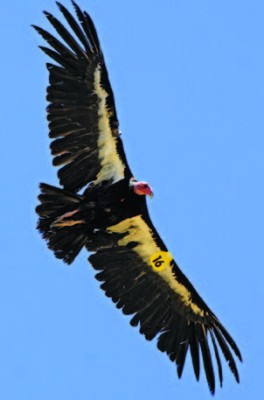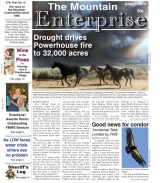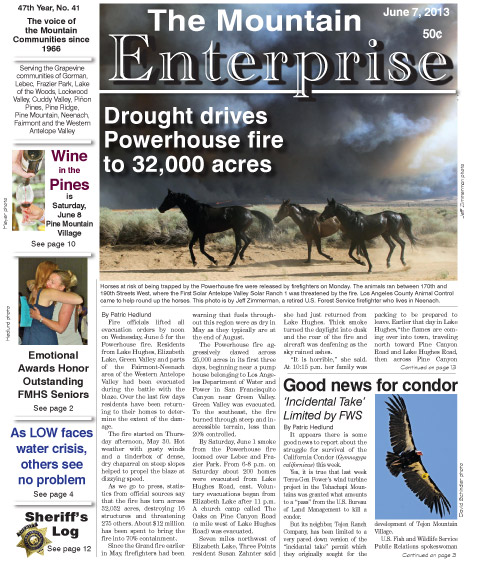‘Incidental Take’ Limited by FWS
By Patric Hedlund
It appears there is some good news to report about the struggle for survival of the California Condor (Gymnogyps californicus) this week.
Yes, it is true that last week Terra-Gen Power’s wind turbine project in the Tehachapi Mountains was granted what amounts to a “pass” from the U.S. Bureau of Land Management to kill a condor.
But its neighbor, Tejon Ranch Company, has been limited to a very pared down version of the “incidental take” permit which they originally sought for the development of Tejon Mountain Village.
U.S. Fish and Wildlife Service Public Relations spokeswoman Stephanie Weagley said in an interview this week that the term “incidental take” as used by her employer encompasses “different definitions.” In the past, “incidental take,” has been understood by most people,
including journalists, as a euphemism for ‘kill.’
Weagley says that in her world, “take” can encompass a variety of verbs: “harass, harm, pursue, wound, trap, and yes, kill—all those activities are multiple definitions of what a take permit could entail,” Weagley said.
“This particular Tejon Ranch incidental take permit will allow only ‘harassment.’ We are not going to issue a permit that will authorize lethal take,” she said, then repeated: “Tejon Ranch is not going to be protected from the lethal take of a California Condor.”
Roger Root is the FWS biologist in charge of evaluating the impact of the Tejon Ranch Tehachapi Uplands Multiple Species Habitat Conservation Plan (TUMSHCP) on condors for the past four and a half years. He is a wildlife biologist who has been with FWS for 10 years.
Our questions for him centered on the difference between actively killing and the possibility of condor dying as a result of critical habitat changes being allowed by the permit.
Tejon Mountain Village is in the center of the endangered bird’s critical habitat as defined in 1976 by the FWS itself.
The Tejon Ranch Company lists efforts it agrees to make to preserve the safety of the habitat for the condor, including putting all new utility lines underground, pulling the development footprint of TMV from critical ridgelines needed by the condor in order to catch updrafts that can carry them into the High Sierra, eliminating use of lead ammunition, providing GPS tracking units to help monitor condor movement patterns, providing a fulltime biologist to implement the conservation plan, and conserving over 66,000 acres of foraging habitat.
Root says that because of the intelligence and curiosity of the condor, he estimates that possibly four condor may become “habituated” over the 50 years of the permit, to the human environments being created by Tejon’s development plans. TRC is allowed by the permit to chase them away (i.e. ‘harass’). If that effort is not successful, FWS has agreed to capture and relocate the bird.
This is part of the June 7, 2013 online edition of The Mountain Enterprise.
Have an opinion on this matter? We'd like to hear from you.



